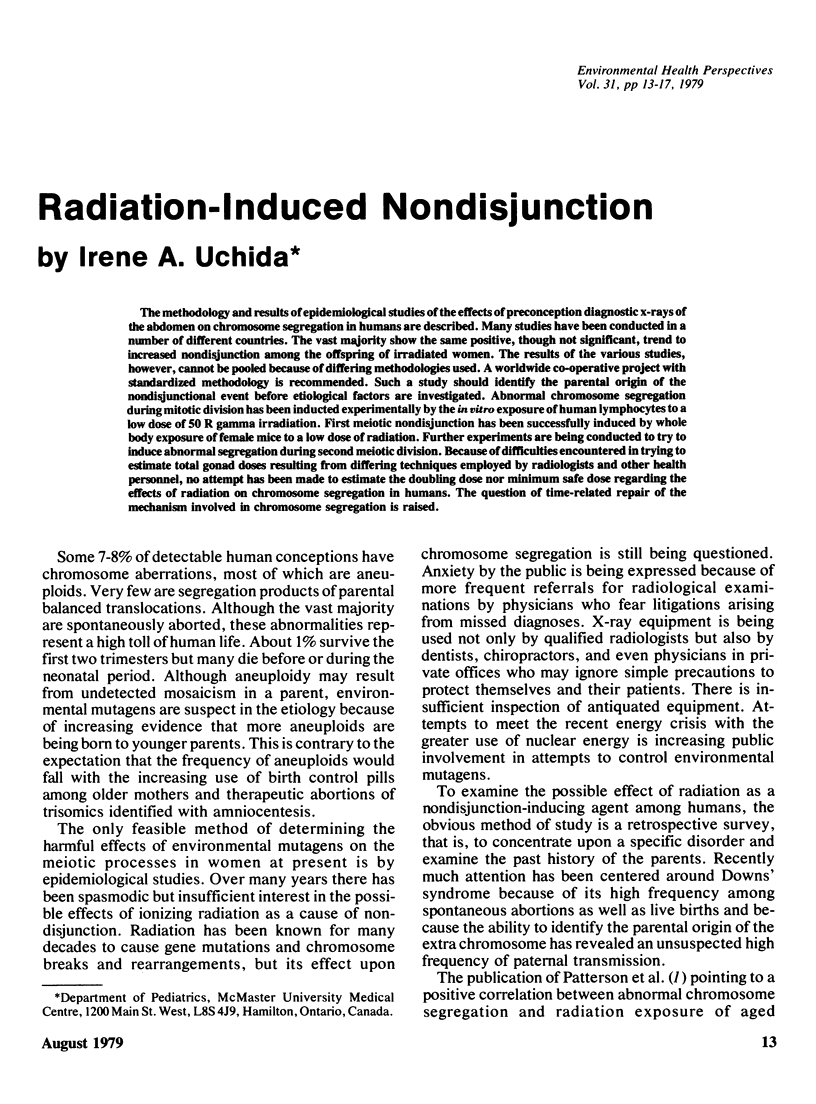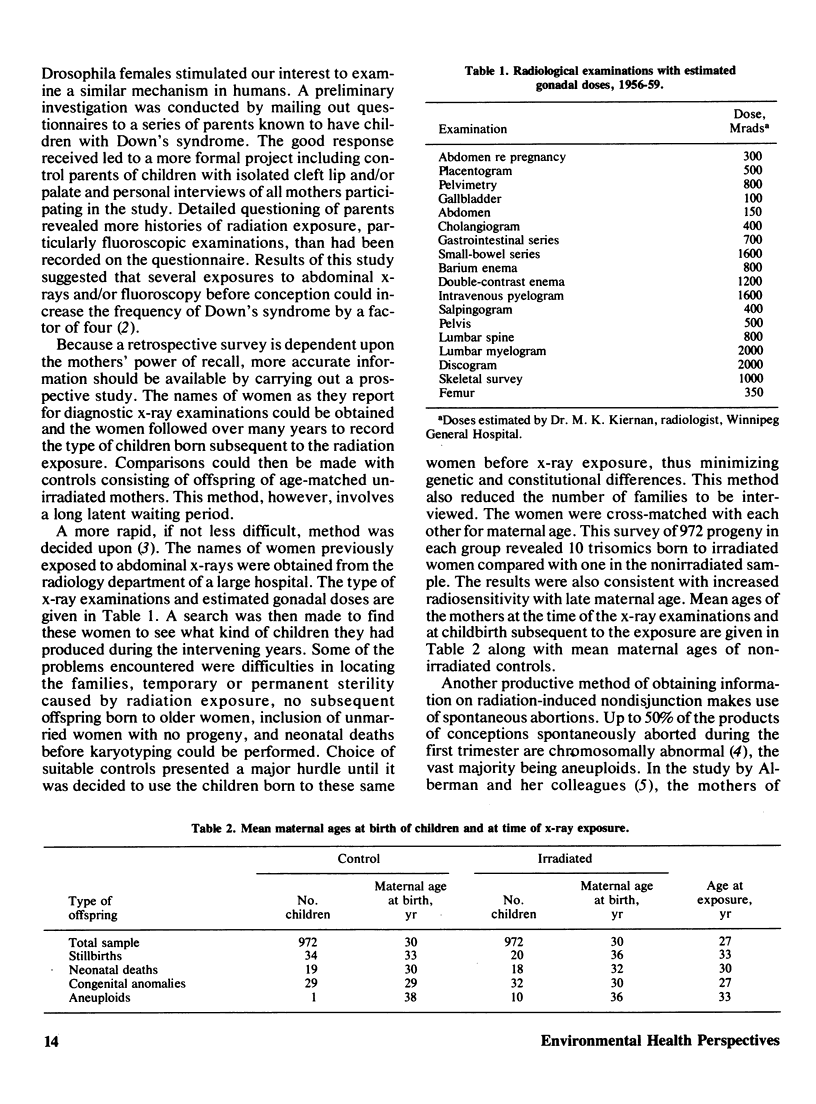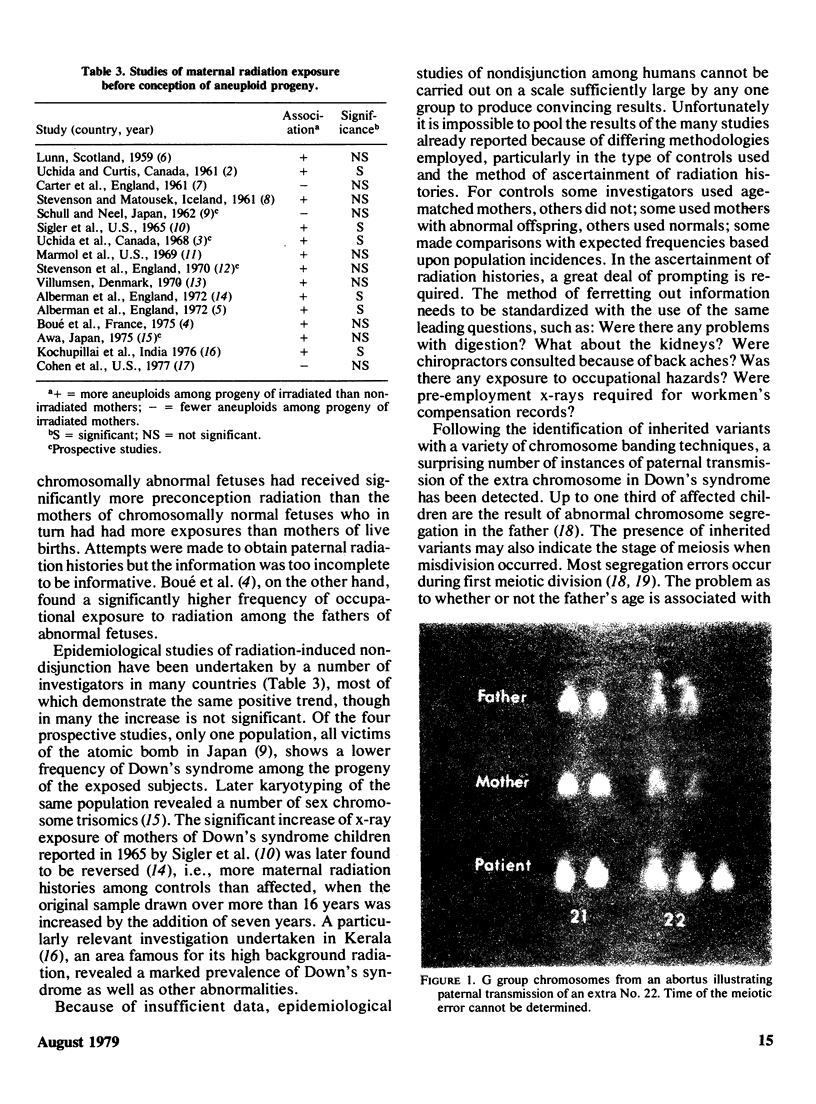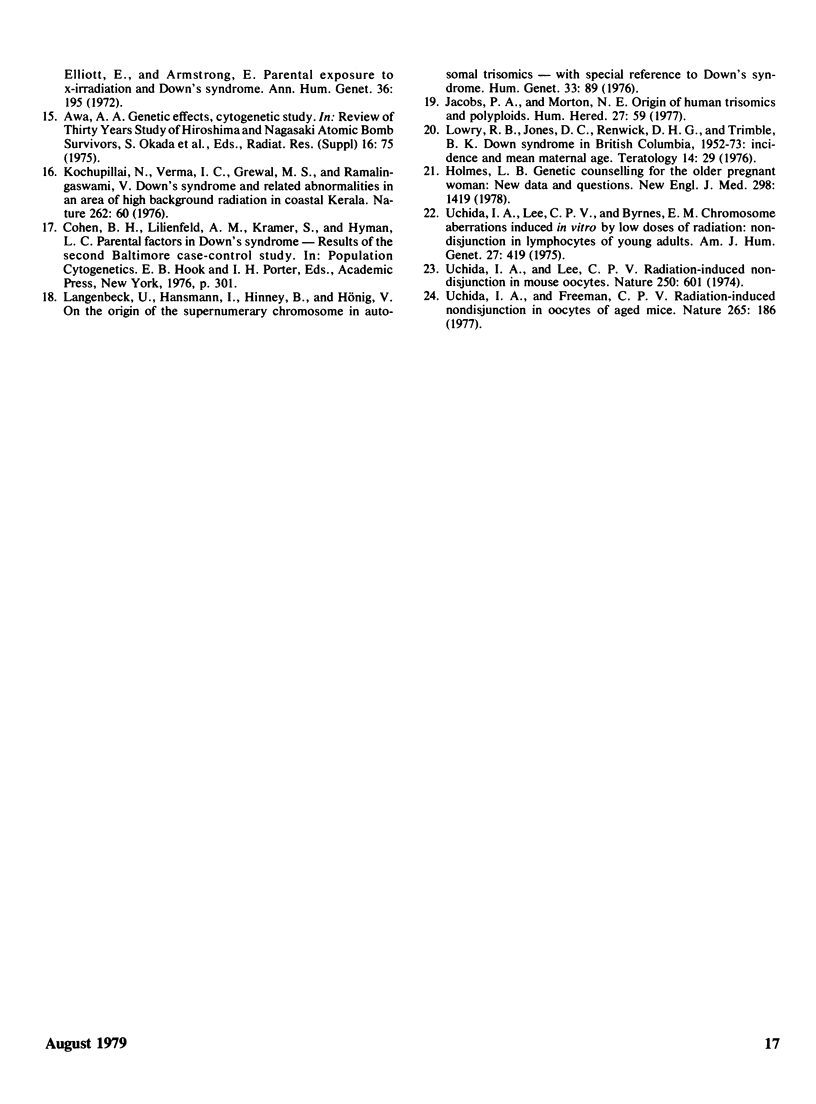Abstract
The methodology and results of epidemiological studies of the effects of preconception diagnostic x-rays of the abdomen on chromosome segregation in humans are described. Many studies have been conducted in a number of different countries. The vast majority show the same positive, though not significant, trend to increased nondisjunction among the offspring of irradiated women. The results of the various studies, however, cannot be pooled because of differing methodologies used. A worldwide co-operative project with standardized methodology is recommended. Such a study should identify the parental origin of the nondisjunctional event before etiological factors are investigated. Abnormal chromosome segregation during mitotic division has been inducted experimentally by the in vitro exposure of human lymphocytes to a low dose of 50 R gamma irradiation. First meiotic nondisjunction has been successfully induced by whole body exposure of female mice to a low dose of radiation. Further experiments are being conducted to try to induce abnormal segregation during second meiotic division. Because of difficulties encountered in trying to estimate total gonad doses resulting from differing techniques employed by radiologists and other health personnel, no attempt has been made to estimate the doubling dose nor minimum safe dose regarding the effects of radiation on chromosome segregation in humans. The question of time-related repair of the mechanism involved in chromosome segregation is raised.
Full text
PDF




Images in this article
Selected References
These references are in PubMed. This may not be the complete list of references from this article.
- Alberman E., Polani P. E., Roberts J. A., Spicer C. C., Elliott M., Armstrong E., Dhadial R. K. Parental x-irradiation and chromosomes constitution in their spontaneously aborted foetuses. Ann Hum Genet. 1972 Nov;36(2):185–194. doi: 10.1111/j.1469-1809.1972.tb00768.x. [DOI] [PubMed] [Google Scholar]
- Alberman E., Polani P. E., Roberts J. A., Spicer C. C., Elliott M., Armstrong E. Parental exposure to x-irradiation and Down's syndrome. Ann Hum Genet. 1972 Nov;36(2):195–208. doi: 10.1111/j.1469-1809.1972.tb00769.x. [DOI] [PubMed] [Google Scholar]
- Awa A. A. Review of thirty years study of Hiroshima and Nagasaki atomic bomb survivors. II. Biological effects. B. Genetic effects. 2. Cytogenetic study. J Radiat Res. 1975 Sep;16 (Suppl):75–81. doi: 10.1269/jrr.16.supplement_75. [DOI] [PubMed] [Google Scholar]
- Holmes L. B. Genetic counseling for the older pregnant woman: new data and questions. N Engl J Med. 1978 Jun 22;298(25):1419–1421. doi: 10.1056/NEJM197806222982511. [DOI] [PubMed] [Google Scholar]
- Jacobs P. A., Morton N. E. Origin of human trisomics and polyploids. Hum Hered. 1977;27(1):59–72. doi: 10.1159/000152852. [DOI] [PubMed] [Google Scholar]
- LUNN J. E. A survey of mongol children in Glasgow. Scott Med J. 1959 Jul-Aug;4:368–372. doi: 10.1177/003693305900400706. [DOI] [PubMed] [Google Scholar]
- Marmol J. G., Scriggins A. L., Vollman R. F. Mothers of mongoloid infants in the collaborative project. Am J Obstet Gynecol. 1969 Jun 15;104(4):533–543. doi: 10.1016/s0002-9378(16)34243-0. [DOI] [PubMed] [Google Scholar]
- Stevenson A. C., Mason R., Edwards K. D. Maternal diagnostic x-irradiation before conception and the frequency of mongolism in children subsequently born. Lancet. 1970 Dec 26;2(7687):1335–1337. doi: 10.1016/s0140-6736(70)92360-3. [DOI] [PubMed] [Google Scholar]
- Uchida I. A., Freeman C. P. Radiation-induced nondisjunction in oocytes of aged mice. Nature. 1977 Jan 13;265(5590):186–187. doi: 10.1038/265186a0. [DOI] [PubMed] [Google Scholar]
- Uchida I. A., Holunga R., Lawler C. Maternal radiation and chromosomal aberrations. Lancet. 1968 Nov 16;2(7577):1045–1049. doi: 10.1016/s0140-6736(68)91525-0. [DOI] [PubMed] [Google Scholar]
- Uchida I. A., Lee C. P., Byrnes E. M. Chromosome aberrations induced in vitro by low doses of radiation: nondisjunction in lymphocytes of young adults. Am J Hum Genet. 1975 May;27(3):419–429. [PMC free article] [PubMed] [Google Scholar]
- Uchida I. A., Lee C. P. Radiation-induced nondisjunction in mouse oocytes. Nature. 1974 Aug 16;250(467):601–602. doi: 10.1038/250601a0. [DOI] [PubMed] [Google Scholar]



